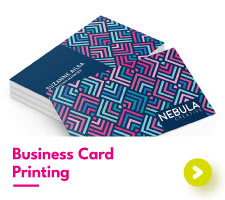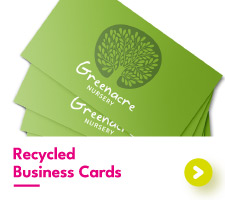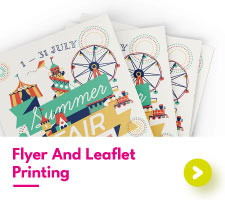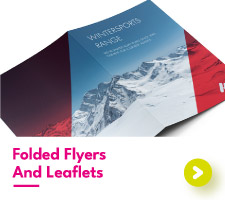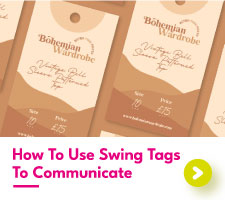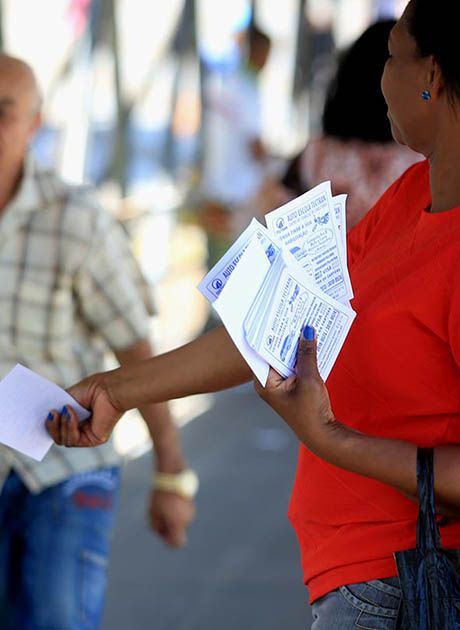What Is The Response Rate For Advertising With Flyers?
When it comes to promoting your business, few methods are as versatile as leaflet distribution. But in a world dominated by digital advertising, many people find themselves asking: Do flyers still work? The answer is a resounding yes. Flyer distribution remains one of the most effective ways to connect with your audience, whether you’re handing out flyers in busy city streets or at events.
So, what is the purpose of flyers, and how can you ensure your campaign is a success? From understanding the flyer response rate to discovering the best way to hand out flyers, there are countless ways to maximize the impact of your custom flyers.
In this blog, we’ll delve into everything you need to know about marketing and advertising with flyers, including the costs of leaflet distribution, the best places to hand out your flyers, and how to boost your response rates. Whether you’re wondering ‘can you hand our flyers on the street in the USA?’ or looking to compare flyering to online methods, we’ve got you covered.
Let’s get started!


In the fast-paced world of modern marketing, one question remains as relevant as ever: Do flyers still work? Whether you’re promoting a new product, advertising a special event, or establishing your new brand locally, leaflet distribution and flyer distribution continue to deliver impressive results for businesses of all sizes.
Unlike some forms of advertising, well-made 5x7 flyers have a unique ability to engage potential customers directly. Research shows that flyers work for marketing by grabbing attention and driving action, but only when done right. For example, according to DMA, almost 48% of consumers who receive a flyer go on to visit the advertised store or website, request more information, or make a purchase. Additionally, 78% of recipients glance at messages in flyers, with 23% reading them thoroughly.
Flyers excel because they’re physical, versatile, and cost-effective. While some marketing methods like billboards and digital ads are generally overlooked and ignored, flyers ensure your message reaches the palms of your target audience. In fact, studies reveal that 79% of recipients keep hold of their flyers or share them with others, making them a reliable tool for generating word-of-mouth and answering the long-asked question of ‘Do flyers work for marketing?’.
Of course, the success of your flyer campaign depends on several factors, including:
- Purpose of flyers: Whether you want to boost sales, increase footfall, or build awareness, a clear goal is key.
- Flyer design: A well-designed flyer catches the eye and conveys your message effectively.
- Distribution strategy: Choosing the best place to hand out flyers can significantly impact results, but be sure to see our below section which asks: Can you hand out flyers on the street USA?
Compared to other forms of print media, handing our flyers achieves high levels of engagement. While flyering jobs can involve time and effort, the flyer response rate is often well worth it, especially for small businesses looking to make a big impact. Whether as a standalone marketing tool or part of an integrated campaign, long-lasting waterproof flyers remain a tried-and-true method of connecting with customers.
So, are flyers worth it? Absolutely – especially when executed strategically with a clear understanding of their benefits and limitations. As we explore later in this blog, fine-tuning your flyer distribution campaign can maximize your return on investment and help you achieve your marketing goals.
The History of Flyers: From Revolution to Modern Marketing
The humble flyer, also known as a leaflet or pamphlet, has a long history rooted in both practicality and revolution. Today, flyer distribution is a go-to marketing strategy for small businesses and large corporations alike, but its journey began centuries ago as a tool for spreading ideas, stirring emotions, and inspiring action. But what is flyering and how has it evolved?


The Early Days: Flyers Spark Movements
Before the age of mass printing, communication relied on town criers shouting announcements in the village square. However, in Renaissance Italy, merchants realized that written messages were more reliable than word of mouth, leading to the first handwritten newsletters. The invention of the printing press in 1450 revolutionised the way information was shared, making flyers an awesome medium for political, social, and religious messaging.
During the British Civil Wars, flyers, often inflammatory in their design and tone, were used to sway public opinion. Notable examples include ‘The Bloody Prince’, a printed leaflet that rallied support against the monarchy. Similarly, during the American Revolution, Thomas Paine’s leaflet ‘Common Sense’ inspired countless individuals to fight for independence. Flyers proved their power by directly engaging people with a sharable medium.
Flyers as Tools for Change
As the centuries progressed, flyering companies became instrumental in causes such as the abolition of the slave trade and women’s suffrage. Activists used leaflet distribution to share eyewitness accounts, statistics, and rallying cries, raising awareness and driving important social movements. During World War II, millions of propaganda flyers were dropped from planes to influence morale and public opinion.
By the mid-20th century, flyers shifted focus from activism to advertising. The 1950s saw the rise of colorful, eye-catching flyer designs promoting consumer goods to post-war baby boomers. With advancements in printing tech, businesses of all sizes began leveraging flyers to connect directly with their target audiences. The advent of color photocopiers in the 1970s democratised flyer design, allowing smaller groups and grassroots organisations to spread their message with low leaflet distribution costs.
The Digital Evolution of Flyers
In today’s digital world, the purpose of flyers has expanded to include both physical and online distribution. Digital flyers, often shared via social media, emails, or websites, complement handing out flyers on the street. While technology has modernized their format, the essence of the flyer remains unchanged: delivering concise, impactful messaging to engage audiences directly.
From sparking revolutions to advertising pizza, well-designed 4x6 flyers have stood the test of time as an effective communication tool. Even in the digital age, flyers work for small businesses and global brands alike because they are personal and adaptable. As we look to the future, the enduring power of flyers reminds us that great ideas, paired with strong design and strategic flyer distribution, will always find a way to resonate.


Nailing Your Flyer Design: A Quick Guide
Creating a compelling flyer is both an art and a strategy. The right design can captivate your audience, clearly communicate your message, and inspire action. Here’s how to make sure your flyer stands out and leads to outstanding ROI:
1. Start strong with a powerful headline


Your headline is the first thing people see – make it count. Use benefit-driven language to highlight the value your flyer offers. Think of phrases that grab attention, like “Don’t Miss Out!” or “Exclusive Offer Inside!”
2. Focus on visuals and simplicity


Design your flyer around central focal points, such as a bold image, vibrant color scheme, or a striking logo. Choose easy-to-read fonts and avoid clutter by sticking to a simple, clean layout.
3. Speak directly to your audience


Tailor your flyer’s tone and messaging to your target audience. This should be obvious, but whether you’re promoting an event or advertising a service, answer their key question: “What’s in it for me?”.
4. Highlight benefits over features


Clearly outline the advantages of your product or service. For example:
- Feature: “Made of Stainless Steel”
- Benefit: “Rust-proof and reusable for long-lasting value”.
5. End with a strong call-to-action (CTA)


Guide readers to the next step with a clear CTA, such as “Visit our website”, “Call now”, or “Order today”. Ensure your flyer includes all essential information like contact details, hours, and website links.
6. Print with purpose


Quality matters. Opt for high-resolution images and premium paper types to ensure your flyers reflect the professionalism of your brand. Glossy flyer finishes or folded flyer and leaflet options can add a unique touch that enhances its appeal, too.
Flyer Distribution Do’s and Don’ts
Distributing your flyers effectively is key to ensuring they reach your target audience and deliver the results you need them to. Whether you’re promoting a local business, event, or new service, here are the best practices (and pitfalls to avoid) when it comes to flyer distribution.
Do’s
- Choose the Right Method: Use community boards, hand out flyers in busy areas, deliver door-to-door (check legalities), or leave them in high-traffic spaces like gyms or waiting rooms.
- Get Permission: Always ask permission before posting or leaving flyers in public or private spaces. Utilise approved areas like corkboards in cafes or campuses, and always ask ‘are you allowed to hand out flyers in the street’ before considering street flyering.
- Target Your Audience: Focus on specific neighbourhoods (geographic targeting) or groups (demographic targeting) to maximize relevance and impact.
- Build a Team: Enlist friends, family, employees, or hire a professional distribution service to save time and reach more people efficiently.
- Track Your Success: Monitor results like calls, visits, or foot traffic and adjust your strategy accordingly.
Don’ts
- Distribute Blindly: Avoid wasting resources by handing out flyers to areas or people who are unlikely to benefit from your message, products, or services.
- Ignore Rules: Don’t post without permission in restricted areas – this could lead to fines and wasted effort.
- Go Solo: Doing it all yourself is time-consuming, so it’s always worth recruiting help where possible!
- Overcomplicate the Message: A clear and simple flyer is more likely to catch attention and inspire the action you’re looking for.
By following these do’s and avoiding these don’ts, your flyer campaign will be more effective, efficient, and impactful.
Cost vs. ROI: What is the Response Rate for Flyer Distribution, and How Can You Improve it?
Flyers are a cost-effective marketing tool that can achieve average response rates between 1% and 5%, meaning that for every 1,000 flyers distributed, you might expect 10 to 50 responses. While this may seem modest, the return on investment (ROI) can be significant when implemented strategically.
But do flyers work for small business? Flyers are especially effective in generating engagement for small businesses, with research indicating that 78% of recipients read or glance at them, and 48% act, such as visiting a store, website, or purchasing a product.
The key is to balance cost with ROI, optimizing your design, distribution, and targeting to improve performance.
How to Improve Your Flyer Response Rate
1. Create a Compelling CTA


Make it crystal clear what you want recipients to do – visit your store, use a discount code, or attend an event. The CTA should be bold, benefit-driven, and impossible to ignore.
2. Target the Right Audience


Focus on geographic (local villages, high-traffic areas) and demographic (specific age groups, interests) targeting. This ensures your flyers reach people who are most likely to act on your offer.
3. Invest in Quality Design


An attractive, well-designed flyer with clear messaging and a professional finish builds trust and encourages engagement. Use visuals that align with your brand and make your messaging stand out.
4. Add Value to Your Offer


Provide an incentive, such as a discount, freebie, or exclusive offer that makes the recipient feel their time is well-spent engaging with your flyer.
5. Leverage Repetition


Repeat exposure works. Consider distributing flyers multiple times in the same area to reinforce your message and build familiarity.
6. Track Results


Use promo codes, QR code stickers, unique URLs, or in-store feedback to measure the effectiveness of your campaign. This data can help refine future efforts.
Cost vs. Digital Marketing
While digital advertising offers granular tracking and scalability, flyer distribution excels in physical engagement. The cost varies: shared distribution can cost $25-35 per 1,000 flyers, while solo distribution might range from $55- $85 per 1,000 flyers. This pricing includes design, printing, and distribution variables such as area density.
However, flyers outperform many other print marketing methods, offering a personal touch that creates high engagement. They also complement digital campaigns well, bridging online and offline marketing for an integrated strategy.
As a whole, flyer distribution is a proven, results-driven approach when executed thoughtfully. By optimizing targeting, design, and value, you can amplify your flyer response rates and achieve impressive ROI – proving that traditional marketing still has a vital role to play in today’s advertising landscape.
Print vs. Digital Flyers: Which is Really Best for Your Campaign?
There’s no doubting that custom print flyers excel at localised flyer distribution, making them ideal for small businesses or community events. They’re physical, memorable, and easily shared. However, flyer distribution costs can add up with printing, distribution, and potential reprints. Environmental concerns around paper use are also worth considering. In this vain, digital flyers offer global reach and cost efficiency, perfect for online campaigns. They enable immediate engagement with clickable links and provide analytics to track your flyer response rate, while remaining eco-friendly and easy to update, making them highly adaptable.
Which should you choose, though? Well, both formats have value. We’d recommend using print flyers for personal, local impact and digital flyers for broader reach and interactivity. Combining the two ensures your message hits both physical and online audiences effectively.
The Legalities of Handing Out Flyers in the USA
Flyers are a versatile and cost-effective way to reach a wide audience, but their distribution is subject to specific legal restrictions in the United States. Understanding these rules is crucial to ensure compliance and avoid potential fines. One major limitation involves mailboxes. Under federal law, placing flyers or any non-postage-paid material in mailboxes is strictly prohibited unless sent through the United States Postal Service (USPS). Violations can result in fines of up to $10,000. This restriction also extends to affixing flyers to the outside of mailboxes, so marketers must seek alternative methods.
Additionally, many neighborhoods and communities have ordinances against indiscriminate flyer placement, such as leaving them on every door in a residential area. Always check local regulations before starting a flyer campaign.
When distributing flyers in public spaces, ensure you don’t block entrances, create litter, or pressure passersby to accept them. Respecting no-solicitation zones is equally important. Many community spaces, such as libraries, visitor centers, and daycare centers, allow flyers to be posted on bulletin boards. Similarly, local businesses like cafés and shops often support flyer distribution on their premises, provided you ask for permission. Creative options for flyer delivery include inserting them into newspapers, adding them to shipments, or distributing them at events. Handouts can also be effective when offered at busy locations like fairs, conferences, or concerts. For a more polished presentation, consider bundling flyers within folders or alongside other marketing materials.
Finally, for large-scale campaigns, professional flyer distributors can streamline the process and ensure compliance with local laws. By following these guidelines, businesses can maximize the impact of their flyers while staying within legal boundaries.


The Future of Flyer Distribution
As marketing trends evolve and practices slowly change, flyer distribution remains a valuable tool, especially for small businesses and local campaigns. While digital marketing dominates globally, flyers continue to shine in specific niches by providing a personal touch and connection. Their enduring relevance stems from their adaptability – whether distributed on the street or in community spaces – and their ability to target specific demographics and locations effectively.
Looking ahead, flyering jobs and techniques are likely to benefit from innovative technologies like GPS tracking and enhanced data targeting, making campaigns even more efficient and measurable. Additionally, businesses that prioritise sustainability, such as using eco-friendly materials for flyers, will align with modern consumer values, ensuring that flyering remains a socially conscious option.
While the methods of distribution may change, the purpose of flyers and flyering meaning – to grab attention and ultimately drive action – remains the same. Whether you’re handing out flyers in the street, partnering with a flyering company, or utilizing door-to-door flyers (where legal), the response rates and cost-effectiveness of this marketing method will continue to support its role in integrated campaigns.
In conclusion, just like distributing eye-catching, custom business cards, flyer distribution costs are manageable and the return on investment can be significant with the right strategy. Flyers aren’t just surviving – they’re thriving in the world of modern marketing, proving that even in a digital age, traditional methods still work. The key is to combine creativity with strategic targeting, ensuring that your flyers resonate with the audience and achieve your campaign goals.
If you enjoyed this blog, why not learn more about why you should spend more on business cards and all the reasons why business cards are still relevant in a world of digital connectivity?

 UK
UK FR
FR
